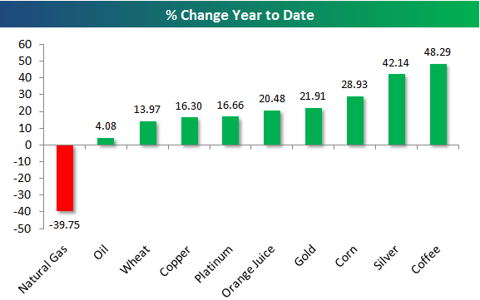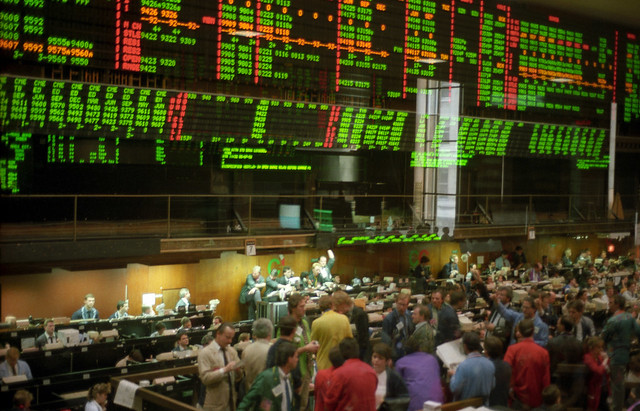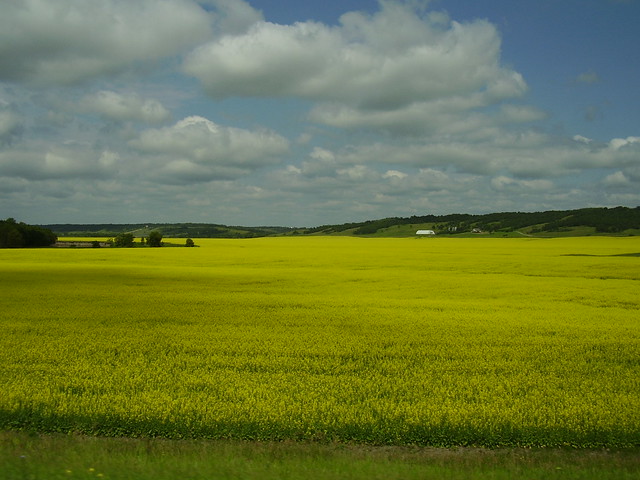Today, I've done a news round-up of some Canadian agricultural news items, mostly related to farmland values, plus profitability and food issues. Farmland prices went up for the first six months of the year, on average, in Canada. Crop reports are down on wet weather.
Wheat crop falls 17 per cent, StatsCan says
A planting season that began with torrential rain and flooding and is ending with crop-killing frost will cut Canada’s total wheat production by more than 17 per cent this year, Statistics Canada reported Monday. “Farmers reported that cool and wet conditions delayed seeding in some parts of the Prairies, while wet weather in September was reported to be delaying the harvesting of crops,” the federal agency said, based on surveys of farmers early last month....
Warnings of drop in wheat, canola yields
Canada is expecting a significant drop in wheat and canola production this year after cold and rain delayed seeding in its vast Western prairie provinces, Statistics Canada announced Monday.
Sobering winds of deflation blow in from the south: time to get ready
Since deflation represents an economy afflicted with too much capacity and too little demand, Canadians might want to pay attention to what's happening south of the border. Waning demand in a country that accounts for more than 80 per cent of Canada's exports poses a serious threat to domestic economic growth. The latest U.S. consumer price index showed a gain of 0.3 per cent for August, but the core rate, excluding food and energy, was flat.
Alberta family farms face struggle to survive
The composition of the traditional family farm has been evolving over decades. The number of farms across the country is shrinking -- 4,221 fewer in Alberta in 2006 than 2001, an eight per cent drop. In 2006 there were 49,431 farms in the province, according to Statistics Canada. And the farms are getting larger, with an increasing number over 906 hectares. Those larger operations climbed to 11 per cent of all farms in Alberta from nine per cent.
The cost of everything from land to fertilizer to equipment rises, while the price of crops and animals doesn't always keep pace. "It gets more and more difficult to run a family farm as we've known it in the past, the mom-and-pop type of operation," says Clem Samson, vice-president of western operations for Farm Credit Canada, an agricultural lender. "With the increasing costs for equipment, the increasing cost for inputs, certainly the uncertainty of the marketplace."
Thanksgiving: family values and the family farm
According to Statistics Canada, the number of family farms in Alberta declined by more than 4,200 between 2001 and 2006. And with costs for fertilizer and land continuing to escalate -- and revenues from crops and livestock not keeping pace -- it means farmers like 26 year Darcy Koester of Rockyford are trying to find new ways to make farm economics viable.... Ironically the value of farm land in Alberta was up 3.8 percent in the last six months of 2009. It was up another 2.9 percent in the first six months of this year.
Ontario teachers pension plan may bid for Potash
Canadian pension fund Ontario Teachers Pension Plan is plotting a rival offer for fertilizer producer Potash Corp. of Saskatchewan that could scupper BHP Billiton Ltd.'s $39 billion hostile takeover of the company.
FARMLAND SUBJECT:
We need to protect the local farms, fields, and fisheries that feed us
A report by the David Suzuki Foundation, Ontario's Wealth, Canada's Future, found that an alarming 16 per cent of farmland in the Greater Toronto Area was lost to urban encroachment between 1996 and 2001. This represents the loss of thousands of acres of some of the most fertile soils in all of North America. The same is happening in other growing communities across the country – like Ottawa, Calgary, and even smaller towns like Fort St. John in northern B.C.
P.E.I. farmland values stagnate
The value of Prince Edward Island farmland continues to stagnate, according to a new report by Farm Credit Canada. The report shows the price of island farmland was unchanged in the first half of 2010, and has dropped or stayed the same in every similar report since 2003. Meanwhile, other provinces, including Nova Scotia and Ontario, showed increases. In the last three semi-annual reporting periods, farmland values in Canada increased by an average of 2.9 per cent in fall 2009, 3.6 per cent in spring 2010 and 3.0 per cent in fall 2010. John Jamieson, executive director of the P.E.I. Federation of Agriculture, said the biggest concern about P.E.I.'s numbers is an increase in farmers' debt load.
Farmland values rise everywhere but B.C.: FCC
"Highly productive" farmland continued to be a hot commodity in most parts of Canada during the first half of this year, according to Farm Credit Canada's twice-yearly farmland values report. Overall, the Crown ag finance firm said in its report Monday, the average value of farmland in Canada rose three per cent during the first half of 2010, following gains of 3.6 and 2.9 per cent in the previous two periods. Among the provinces, Ontario posted the highest average increase at 4.3 per cent over the first half of 2010 ending June 30.... [for information on each province, please go to the source]
Farm Credit Canada: Fall 2010 Farmland Values Report
[Farmland Values Report provincial releases - There is much more data at the source.]
Ontario: At 4.3 per cent, Ontario experienced the largest provincial increase in farmland values during the first half of 2010.
Manitoba: Manitoba farmland values increased an average of 3.4 per cent during the first half of 2010.
Nova Scotia: Nova Scotia farmland values increased an average of 3.1 per cent during the first half of 2010.
Saskatchewan: Saskatchewan farmland values increased an average of 2.9 per cent during the first half of 2010.
Alberta: Alberta farmland values increased an average of 2.9 per cent during the first half of 2010 -- a trend that has continued since 1993.
Quebec: Quebec farmland values increased an average of 2.3 per cent during the first half of 2010.
Newfoundland and Labrador: Newfoundland and Labrador farmland values increased 0.7 per cent over the first six months of 2010.
New Brunswick: New Brunswick farmland values were unchanged during the first half of 2010. Values have stabilized since reaching a peak increase of 6.3 per cent in the last half of 2008.
Prince Edward Island: Prince Edward Island farmland values remained stable over the first six months of 2010.
British Columbia: British Columbia was the only province to see a decrease in farmland values by an average of 0.9 per cent over the first six months of 2010.
Value of farmland in Sask. up
The Regina-based federal Crown corporation is Canada's leading agriculture lender, with a loan portfolio of more than $19.7 billion and 17 consecutive years of portfolio growth.
When urban zones hit rural - Complaints over farm practices on rise as more people move to countryside
There's no doubt in Tom Baumann's mind: The Fraser Valley contains the best farmland in Canada. The University of the Fraser Valley agriculture professor regularly shows his students two photos. The first, taken in 1985 of the eastern Fraser Valley from the top of Mt. Cheam, shows a hazy grid of green and brown fields. The second, taken in 2006 from the same place, shows a grid of fields stamped with another grid of tiny buildings. "The land is slowly being eaten up," he says. That's because the region with the best farmland in Canada also has one of the fastest-growing populations in the country.
Farmland Frontier - New wave of agricultural land-grabs reaches Canada
In an age of escalating food insecurity and financial uncertainty, large corporations, investors, and even nations states have been stalking the globe in pursuit of an age-old and certain commodity: farmland. Bought up on a large scale to secure food for cropstarved countries or to make a safe investment, farmland is becoming the lucrative prize of a new resource frontier. The sweep of agricultural land grabs has stripped small farmers in Africa, Latin America and Asia of control over vital tracts of fertile land. And quietly, these modern-day land marauders are coming to Canada—undermining family farms, compromising local food sovereignty, and harming the environment.... News has broken recently about Quebec-based Monaxxion, representing Chinese financiers, which seeks to purchase 99,000 acres of land across Canada.... And Agcapita, a Calgary-based investment fund, has scooped up between 30,000 and 60,000 acres of farmland, mostly in Saskatchewan....














